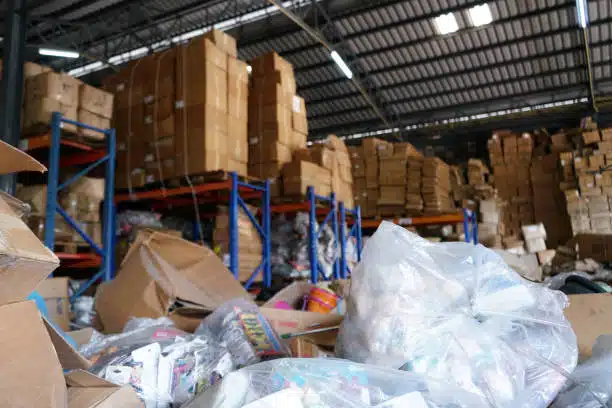The aim of this procedure is to define the necessary steps to be taken to describe how unusable items are handled and tracked in the storage warehouse of commercial and industrial companies. It is triggered by the results of the physical inventory. This is followed by the processing of the inventory by the unusable items commission, which monitors a monthly status report. The process ends with a decision to remove the goods from the warehouse.
The unusable items committee is made up of the warehouse manager, the purchasing and logistics manager and the controlling manager.
In order to trigger the process, the following rules must be respected :
- Drawing up a list of unusable items.
- Proposal of a list of unusable items.
- Study and analysis of the list of unusable items.
- Proposal of solutions.
- Approval of list of unusable items by (MCM).
- Validation of list of unusable items by (GM).
- Repositioning of obsolete items.
- Appointment of expert and bailiff.
- Final decision.
- Disposal of unusable items.
Responsibility

Management Rules
the examination of unusable items in the companies’ storage warehouse must be analyzed at least once a year by the warehouse manager under the supervision of the purchasing and logistics manager and the management control manager
Risk & Control

Narrative

1- Drawing up, proposing, studying and analyzing the list of unusable items :
Following the results of the physical inventory, the warehouse manager draws up a signed statement summarizing the unusable items in the company’s storage warehouse. He then prepares a proposed list of these items for submission to the purchasing and logistics managers.
Once the list of unusable items has been received from the warehouse manager, the purchasing and logistics manager studies and analyzes this list, specifying the unusability of the items proposed by the warehouse manager.
At the end of this study, the Purchasing and Logistics Manager signs an official statement approving the list of unusable items, which is then sent to the Controlling Manager. The purchasing and logistics manager may be asked to propose solutions for disposing of these unusable items, for example: disposal in bulk, scrapping, sale by the kilo, etc.
2- Validation and upgrading

The Controlling Manager reads the list of unusable items, the proposed solutions and the minutes. The Controlling Manager approves the list of unusable items and the minutes, which are submitted to the General Manager for validation.
Once the list of unusable items has been validated, the General Manager instructs the Purchasing and Logistics Manager to reposition the unusable items in a separate area of the warehouse to facilitate their recovery, as well as to appoint an expert (accountant, auditor, legal expert, etc.) and a bailiff.
The purpose of appointing an expert (accountant, auditor, court-appointed expert, etc.) and a bailiff is to provide conclusive evidence of the value of these unusable items, following the drawing up of a revaluation report and a record of the expert’s findings.
3- Removal and disposal of unusable items

The Purchasing and Logistics Manager draws up the request for the removal and/or disposal of unusable items, which is signed by the Managing Director and forwarded to the Purchasing and Logistics Manager for execution.
Comments
The department concerned is the one responsible for managing unusable items. In general, the participants are : the management control manager, the purchasing and logistics manager and the warehouse manager.
It is also important, when drafting your procedures, to specify the following for each of them :
The type of task
The person carrying out the task
The deadline for carrying out the task
The frequency of the task
The implementation of this procedure will take effect as soon as it has been approved by General Management.
We recommend that you use Visio, a highly effective tool from Microsoft Office, for the flowchart.
Our articles are written by expert consultants from ED TRUST, Forvis Mazars, EY, Deloitte and Grant Thornton.


